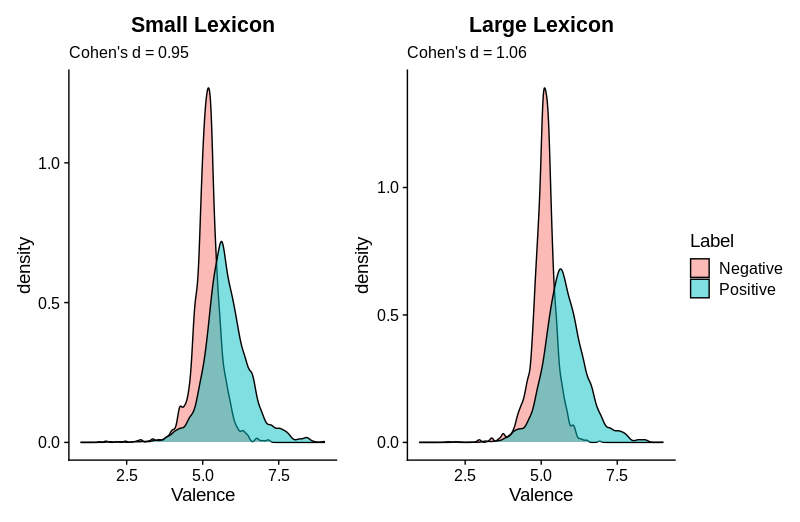hebnoRms provides affect norms (valence and arousal; ranging from 1 to 9) for up to 1.4M hebrew words. It was built on E-Millim (Armony-Sivan et al., 2013) and expanded using fasttext (Joulin et al., 2016) and the SVLM Hebrew Wikipedia Corpus (Silber-Varod et al., 2017).
Hebrew is a morphologically rich language, an as such it makes relativly simple NLP tasks more challenging than in English.
hebnoRms takes a heuristic approach, instead of parsing every single word, it overcomes with large lexica (22K and 1.4M) that includes separate values for each token, even if the target word is the same [samaxti (I was happy) ≠ esmax (I will be happy)].
Please note that using the large lexicon is significantly slower than the smaller one.
Examples
library(hebnoRms)
get_valence("בדד אלך גם תפילה אין לי")
## [1] 5.27
get_valence("בדד אלך גם תפילה אין לי", long = TRUE) #use large lexicon (1.4M tokens)
## [1] 5.13
get_valence("יום הולדת חגיגה נחמדת")
## [1] 7.02
get_valence("יום הולדת חגיגה נחמדת", long = TRUE) #use large lexicon (1.4M tokens)
## [1] 7.01 Validation
It was validated on the Neural Sentiment Analyzer for Modern Hebrew (Amram, Ben-David, & Tsarfaty, 2018), resulting in Cohen’s d = 0.95 and Cohen’s d = 1.06 for the small and large lexica respectively.

References
Joulin, A., Grave, E., Bojanowski, P., Douze, M., Jégou, H., & Mikolov, T. (2016). Fasttext. zip: Compressing text classification models. arXiv preprint arXiv:1612.03651.
Silber-Varod, V., Latin, M., & Moyal, A. (2017) "Frequency of Hebrew phonemes and phoneme clusters in a data-driven approach. (in Hebrew). Literacy and Language (Oryanut Ve-Safa), 6, 22-36
Armony-Sivan, R., Cojocaru, L., Babkoff, H. (2013). Affective norms for Hebrew words (E-millim): Instruction manual and affecting ratings. Ashkelon Academic College, Ashkelon, Israel.
